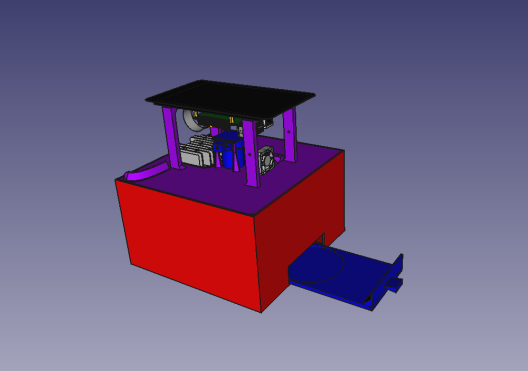Cell Counting System
Photos

Currently the analysis of bacteria cultures grown on petri dishes is mainly done by hand. One has to distinguish between different types of bacteria or fungi and count the occurrences. This can be very cumbersome, especially for large numbers (>200) of objects on single dishes.
We aim to develop a fully automatized system that can detect and count all species that occur on the dishes. Additional information such as the size per species or the total area covert can easily be extracted.
To do so, we built a 3D printed box in which the dish can be inserted through a tray. The dish is then illuminated under constant conditions, photographed and analyzed by the help of a Raspberry Pi mounted on top of the box. The user can control the setup by a touch screen and decide if the images are stored for later evaluation or analyzed directly. Additional parameters such as exposure and lighting can be adjusted directly through the Pi.
By applying UV LEDs (405nm) next to normal color LEDs one can additionally investigate biofluorescence phenomena (e.g. as seen for legionella pneumophila).
Despite commercially available captureing systems, our system is not only built up on cheap (less than 150€) publicly available hardware but also runs on open source software and uses modern machine learning algorithms. Everyone is invited to copy and improve our system and share their results!
Simple counting of single species cultures is easily done with classical computer vision algorithms such as distance transform and the Watershed algorithm. To tackle more sophisticated tasks like many overlapping objects or classification of similar species deep learning algorithms (e.g. convolutional neural networks) will be used.
Currently we finished hardware development and are collecting training data to develop further algorithms.
The software to run the UI and counting/detection algorithms can be found on Github.
CAD Files (FreeCAD, STEP and STL) and a list of the used hardware components can be downloaded here.




